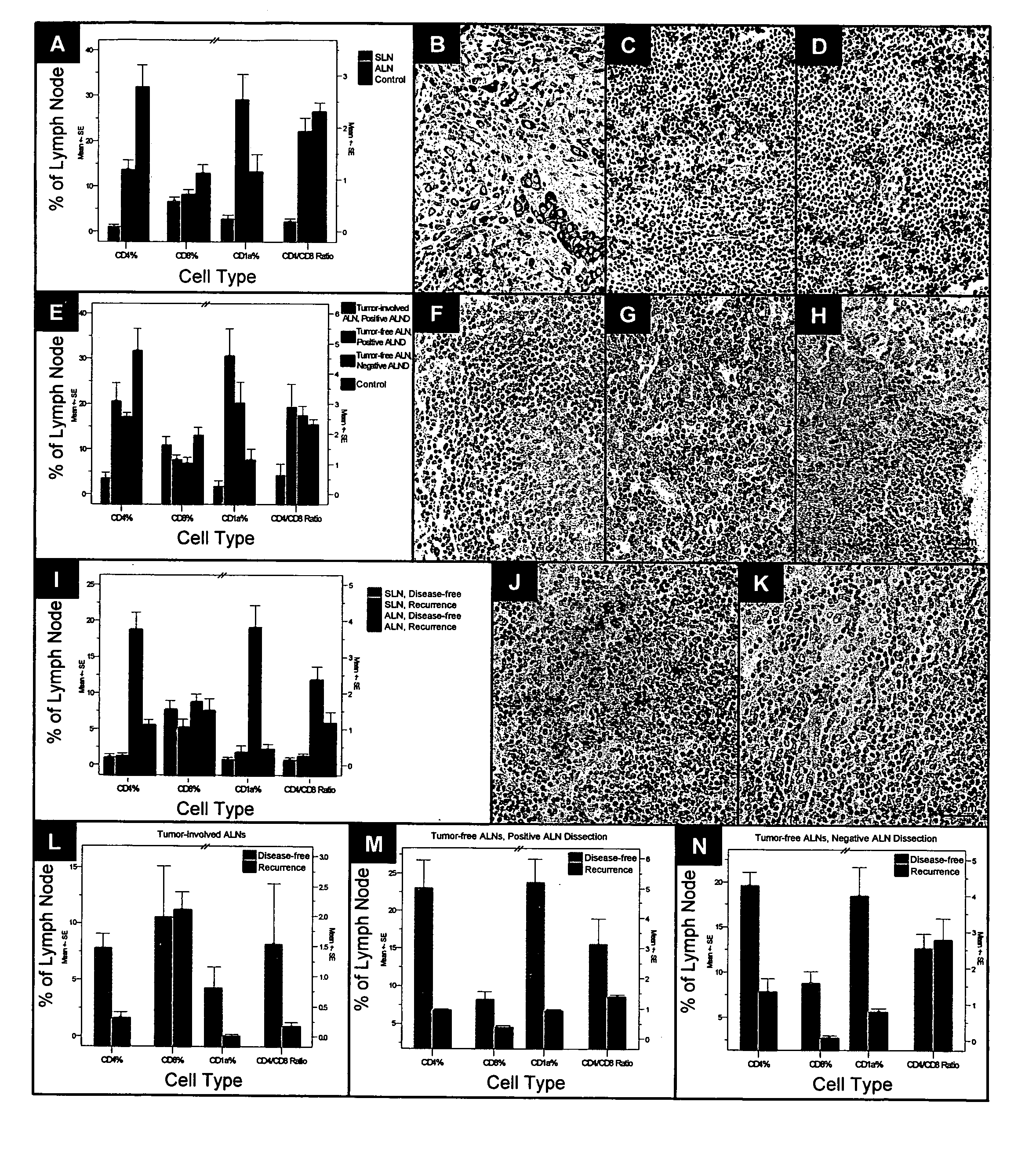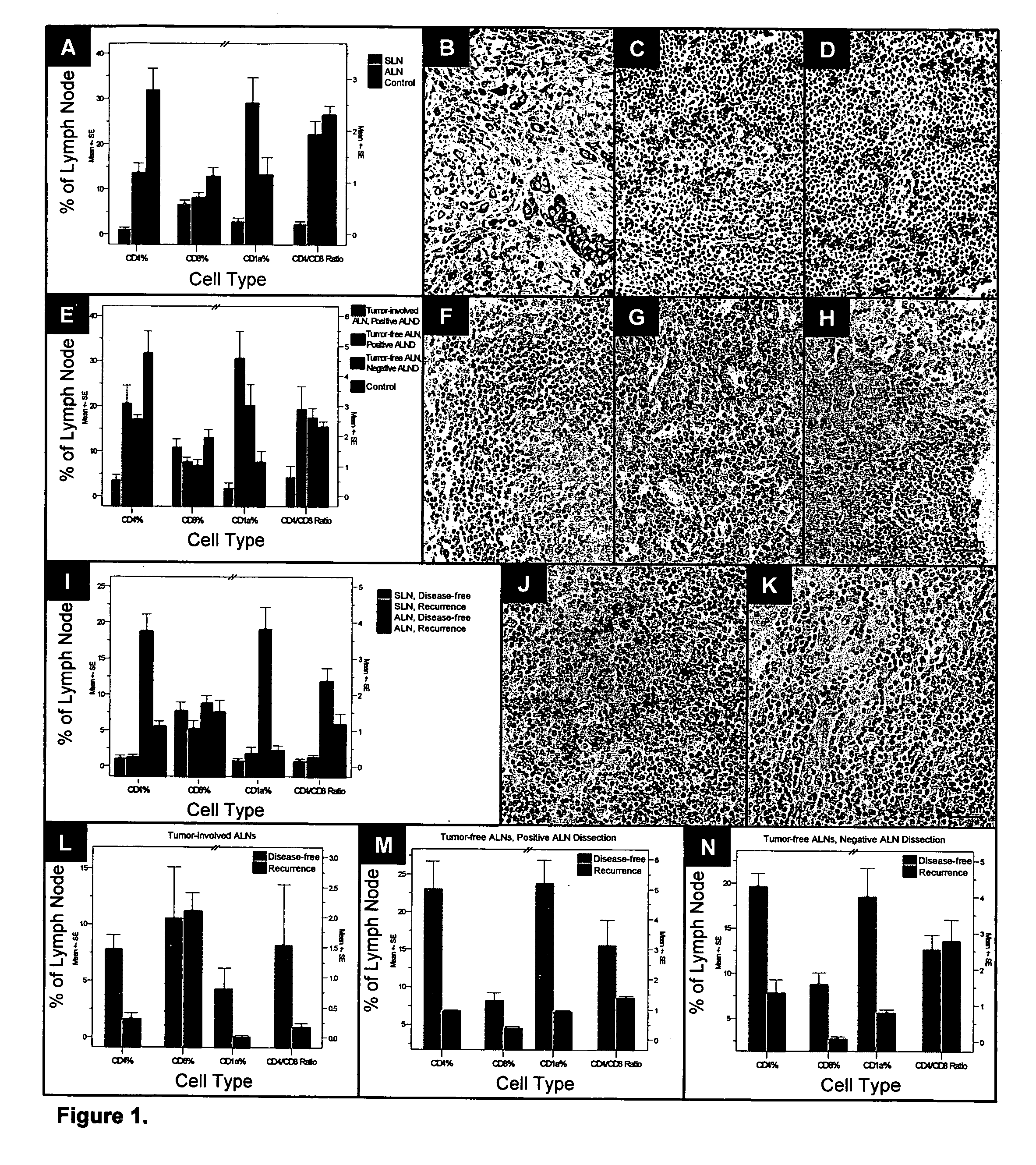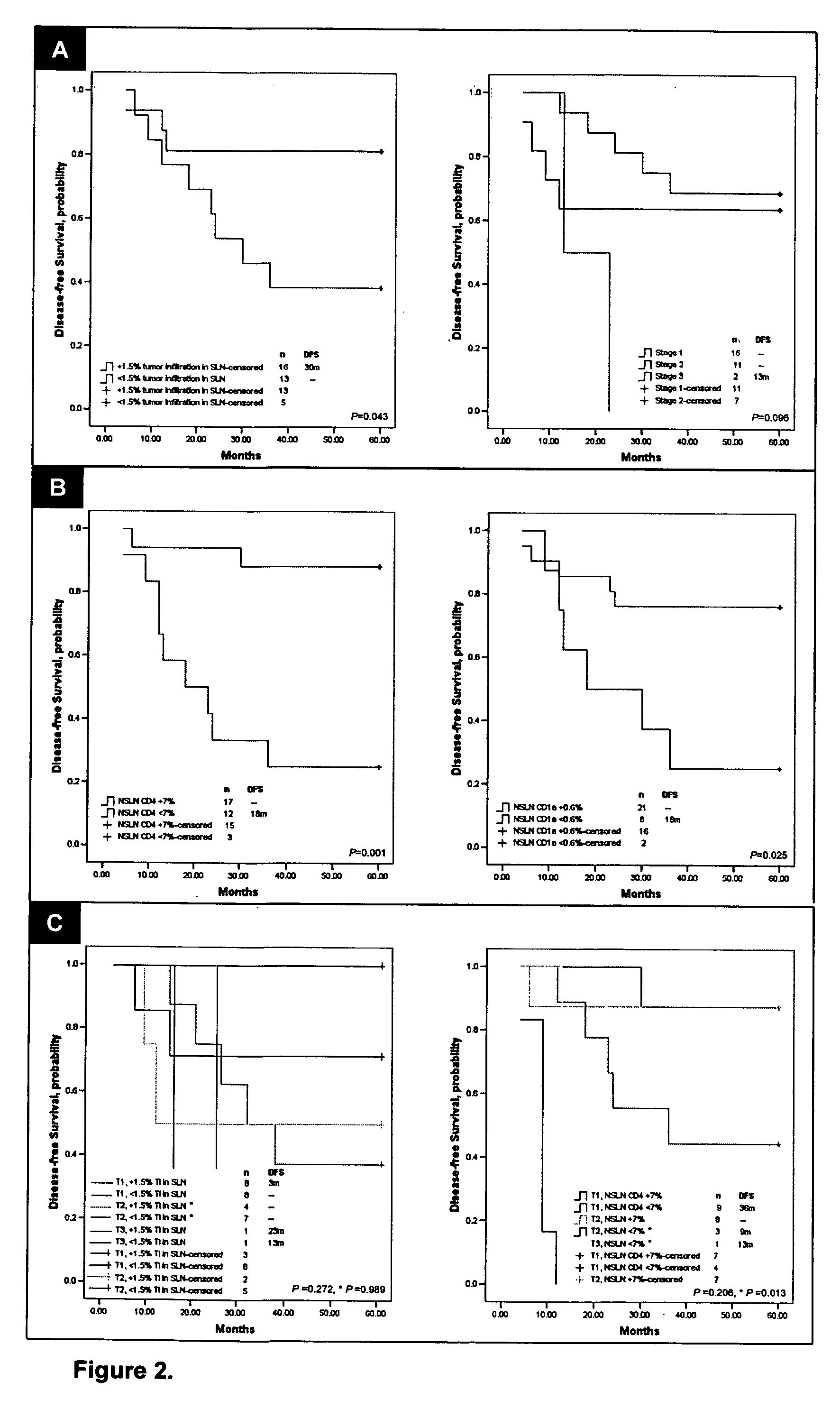Immune profiling of lymph nodes associated with cancer
a lymph node and immune system technology, applied in the field of immune system profiling of lymph nodes associated with cancer, can solve the problems of poor overall survival, inconclusive prognostic significance of isolated tumor cells and positive rt-pcr nodes, and correlation between decreased circulating t lymphocyte populations and other problems, to achieve the effect of improving patient care and determining patient prognosis
- Summary
- Abstract
- Description
- Claims
- Application Information
AI Technical Summary
Benefits of technology
Problems solved by technology
Method used
Image
Examples
example 1
Methods
[0064] STUDY PATIENTS. Breast cancer patients aged 29-80 years treated at Stanford University Medical Center between February 1997 and January 1999 and found to have tumor-involved SLNs by multilevel hematoxylin and eosin staining (HES) or immunohistochemistry (IHC) were evaluated. Patients who subsequently underwent ALN dissection, as is standard clinical practice, with clinical outcome data available were selected. SLNs and ALNs were selected based on their designation as sentinel or axillary by the operative report. In surgical cases involving multiple SLNs and ALNs, one SLN (SLN series 1) and one ALN (ALN series 1) were arbitrarily selected by the Department of Pathology staff and represent the training set, n=29. The Pathology staff member was blinded to the study design. As no randomization technique was employed the training set selection process is by definition arbitrary rather than random. To test reliability and variance of immune profile, eight ALNs were selecte...
example 2
Dendritic and T Cell Dysregulation in Axillary Lymph Nodes Predict Breast Cancer Recurrence
[0096] The capacity of tumor cells to evade the host immune response is now well established. However, the specific in vivo tumor-immune interactions leading to immune tolerance induction remain poorly understood. Within the primary tumor, detailed ex vivo analyses by immunohistochemistry of ovarian, gastrointestinal, bladder, lung, and breast cancers have demonstrated a significant lymphocytic infiltrate, many of which express an immune suppressing phenotype characterized as CD4 T regulatory cells. Further primary tumor analysis by cell phenotyping in combination with architectural modeling has demonstrated an abnormally increased ratio of immature to mature dendritic cells preferentially located along the primary tumor margin. Though the immunophenotype within the primary tumor supports immune tolerance, it is unclear if this is a result of, or results in, tumor-immune modulation at other s...
PUM
| Property | Measurement | Unit |
|---|---|---|
| time | aaaaa | aaaaa |
| time | aaaaa | aaaaa |
| color | aaaaa | aaaaa |
Abstract
Description
Claims
Application Information
 Login to View More
Login to View More - R&D
- Intellectual Property
- Life Sciences
- Materials
- Tech Scout
- Unparalleled Data Quality
- Higher Quality Content
- 60% Fewer Hallucinations
Browse by: Latest US Patents, China's latest patents, Technical Efficacy Thesaurus, Application Domain, Technology Topic, Popular Technical Reports.
© 2025 PatSnap. All rights reserved.Legal|Privacy policy|Modern Slavery Act Transparency Statement|Sitemap|About US| Contact US: help@patsnap.com



